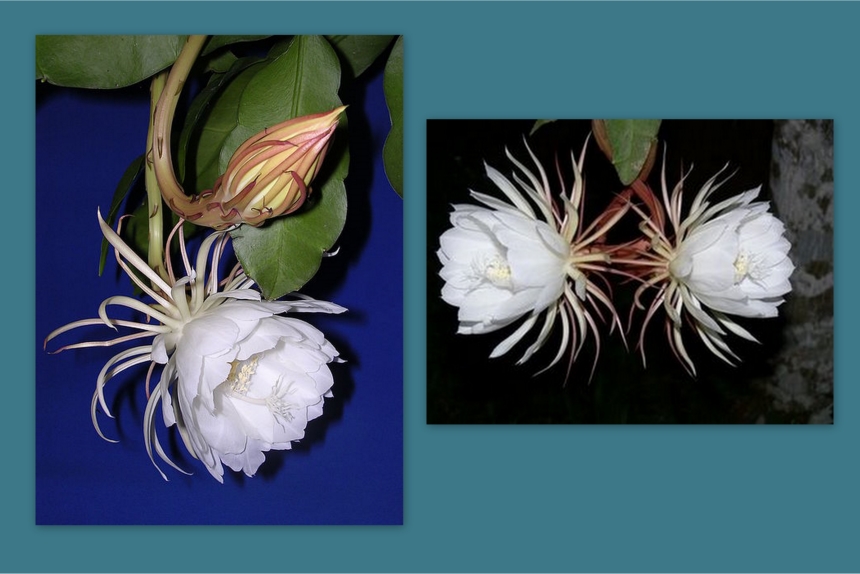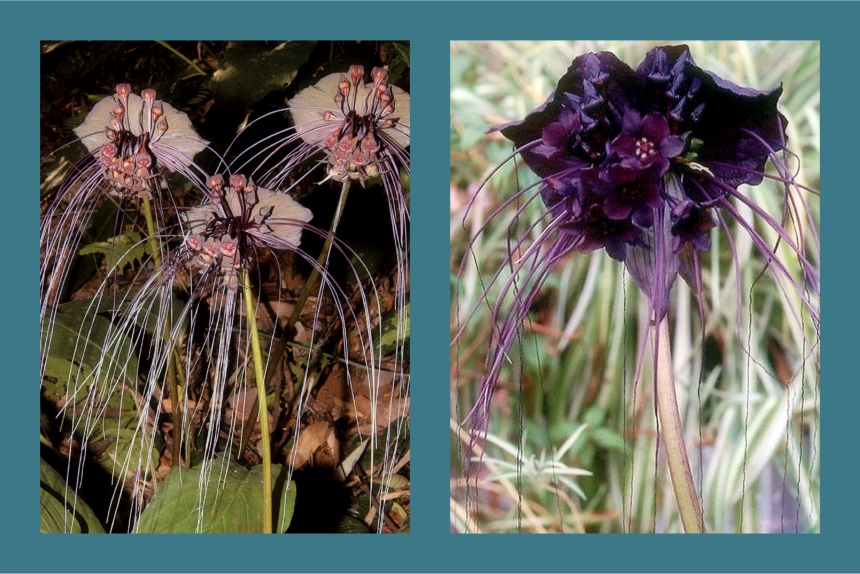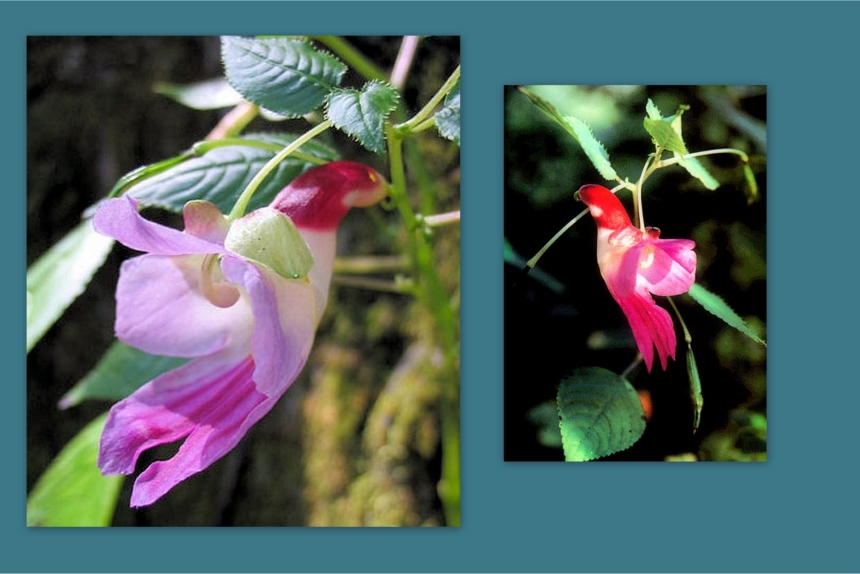

The Yellow Gazette, Vol.2 No.3 April 2011

Kadupul FlowerThe miracle begins to unfold around 11.00pm. The night air fills with a soft indefinable scent, and the five leaved calyx, white with a hint of purplish green in its veins, opens out gradually so gradually that you don't see it happening and then a thin, three-inch petal of scintillating white peeps out, unfolding its beauty in the still night air. Another and another follow suit and by midnight all the petals have opened out and the stamens hold out their sacs of pollen. For a few moments this rare blossom sways softly in the night wind, the fragrance is now intense, washes over your senses. But all too soon the petals begin to wilt and by dawn the entire flower has withered. This epiphytic plant grows in the forks of large trees, where the decayed particles of bark and moisture collect to give it a rich protective foothold. The plant has leathery leaves, a little thicker than that of the vanda orchid, but not as thick as that of the cactus. The leaves are long with scalloped edges. The scallops point downwards. During the Sri Pada season, November to March, a little shoot appears at the point where two scallops meet; the shoot grows to a length of about five inches before it bears a bud, which hangs down on its slender stem. This is the Kadupul - the legendary flower of the Celestial Nagas. It is believed that when these flowers bloom, the Nagas come down from their celestial abodes, to offer them to the Buddha on the Holy Mountain Sri Pada. The strange fragrance, the midnight miracle, and the fact that flowers bloom in the season when people flock to Sri Pada, seem to add authenticity to this belief; the classical poet sang; |
|

The Black Bat FlowerThe black bat flower, or tacca chantrieri, is exceptionally rare and quite beautiful. A very unusual species with black bat shaped flowers up to 12" across, and long 'whiskers' that can grow up to 28". Tacca chantrieri grow wild in the tropical forest in Yunnan Province, China, where they can get as tall as 36". Altogether the bat flower is one of the spookier plants we have come across - something that Morticia Adams might like to have in her conservatory. There is certainly something of the triffid about them too, but the fact is that the wild variety of this plant species can be found in the Yunnan Province of China. It is also found in Thailand and Burma. It is an unusual but increasingly popular addition to gardens but grown best in the wild - often up to thirty six inches. They were first introduced to Europe and the Americas at the turn of the last century when it was grown specifically for its fabulous foliage. You may hear of them as Tacca plants - and this is the vernacular name for this species and a number of close relatives. As it is a jungle plant it grows best in shaded areas but does better outdoors (in temperate climate) than in the stillness of a greenhouse where it dislikes the lack of breeze. As the flower cluster rises above the leaves, the overall effect is alien, stunning and perhaps just a little disconcerting. A flower with such features could be imagined easily to have triffid like qualities - but the Tacca is completely harmless and will certainly never surprise you with a slap from a stinger (even though it looks like it might!). |
|

The Parrot FlowerImpatiens psittacina, known variously as the "parrot flower" or "parrot balsam" is a species of balsam from Southeast Asia that was described by the botanist Joseph Dalton Hooker and was noted for its flowers that resemble a "flying cockatoo". It is known from Thailand, Burma and parts of India. It is a much-branched, leafy herb. Stem and branches rather stout, terete, coloured. Leaves two to three inches long, ovate, acuminate, serrulate, base rounded, with two clavate, erect glands on the surface at the point of attachment of the petiole which is eglandular. Flowers axillary, solitary, two inches long, pendulous from an arching peduncle an inch long, which bears one or two minute setaceous bracteoles, near, or above the base. Sepals two, orbicular-oblong; obtuse, green. Standard orbicular, concave, pale rose-coloured, two-thirds of an inch broad. Wings one and a half inches long; basal lobe orbicular, concave, erect; terminal longer, obliquely oblong, recurved, suffused and streaked with red. Lip as long as the wings, conico-campanulate, incurved, narrowed at the base into a short, hooked spur, white with an irregular dash of bright carmine on the convex surface towards the base; mouth large, with an obtuse apex. Name for the plant "Literally translated that says: Dork or Dok = flower, Nok = bird, and Khaew = green or the word for parrot. So the translation would be Flower Bird Parrot." The Thai word "khaew" used in the name of the flower means either glass or crystal or a similar substance or it means something precious. The Thai word for green is usually transliterated as "kieow". (It's probably a little hard to know from looking those spellings, but the words sound - and are written - completely different in Thai.) I suppose you could break "nok khaew" apart into Bird Precious or Bird Crystal or something like that, but Thai generally doesn't work like that. Almost all the names of birds in Thai include "nok" - the general word for bird - and one or two other words that complete the name of the bird. The bird cannot be referred to by a shorter verion without the word "nok". So, the Thai for parrot is simply an indivisible "nok khaew". |
|
 |
|
|
Little Nellie has no plants to offer this month. She has decided to offer them by request, and the current plan is that they will feature on this page every other month. |
|
If you have any plants you would like donate to Little Nellie for use in Yellow (or elsewhere), you can send them to yellowgazette@cox.net Send all questions or comments to yellowgazette@cox.net. | |